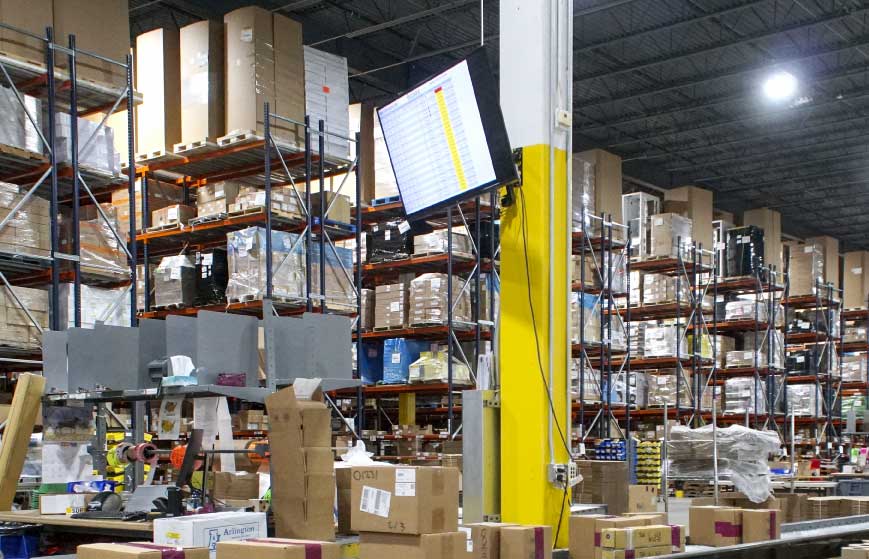In the fast-paced, competitive logistics industry, companies are constantly seeking ways to streamline operations. Digital signage is emerging as a game-changing tool that helps logistics providers move goods faster and more efficiently. “It’s not like the digital signage you may be used to seeing; think of a drive-thru or retail experience,” explains Tim Bennett, director of channel and emerging technology for Bailiwick. Instead, these applications of digital signage are transforming how logistics companies communicate with employees, optimize workflows, and monitor key performance indicators in real time. In this article, we’ll explore how logistics companies are leveraging this technology to stay ahead of the curve and improve overall performance.
Convey messages.
Logistics facilities can be hundreds of thousands of square feet, so finding a way to effectively communicate with employees is crucial. Digital signage can be placed in strategic areas—like break rooms or in linehaul areas—to relay important information, whether it’s safety stats, human resources updates, or company-wide events. “It’s really a mechanism to get information out to busy people who may not be logging into their company’s intranet for current information,” says Bennett.
Track shipments.
A key function of logistics companies is tracking incoming and outgoing shipments. Digital signage makes this task easier by alerting employees about packages that are ready for dispatch, the locations and estimated delivery times of inbound packages, and any potential delays.
Exceptional Technology Deployment.
Find out why companies trust Bailiwick for deployment of their large-scale digital technology initiatives.
Assist with wayfinding and navigation.
Within large, complex logistics facilities, digital signage strategically placed near entrances, loading docks, and other high-traffic areas can help employees and visitors get to their intended destination faster. Interactive kiosks equipped with facility maps can offer step-by-step directions, while digital screens can provide real-time information on congestion levels to optimize movement through the spaces, such as directing trucks to available bays or suggesting quicker alternative routes.
Improve efficiency.
With thousands of packages in transport every day, efficiency is a top priority. Digital signage can be used to direct handlers on how to place or reposition packages onto the conveyor belt. “Then it’s going down the belt properly; it’s getting routed correctly into trucks,” says Bennett. “They have information on the sizes of the packages, so they can optimize truck capacity.”
Manage the fleet.
For logistics companies with large vehicle fleets, digital signage can be helpful for keeping drivers in the loop about route changes, traffic and weather conditions, and vehicle maintenance schedules.

and shipping information.
Monitor performance.
By displaying real-time data on key performance indicators—such as delivery accuracy, shipment volumes, order fulfillment times, and inventory levels—on digital signage throughout their facilities, logistics companies can motivate and hold employees accountable, as well as keep organization goals top of mind.
